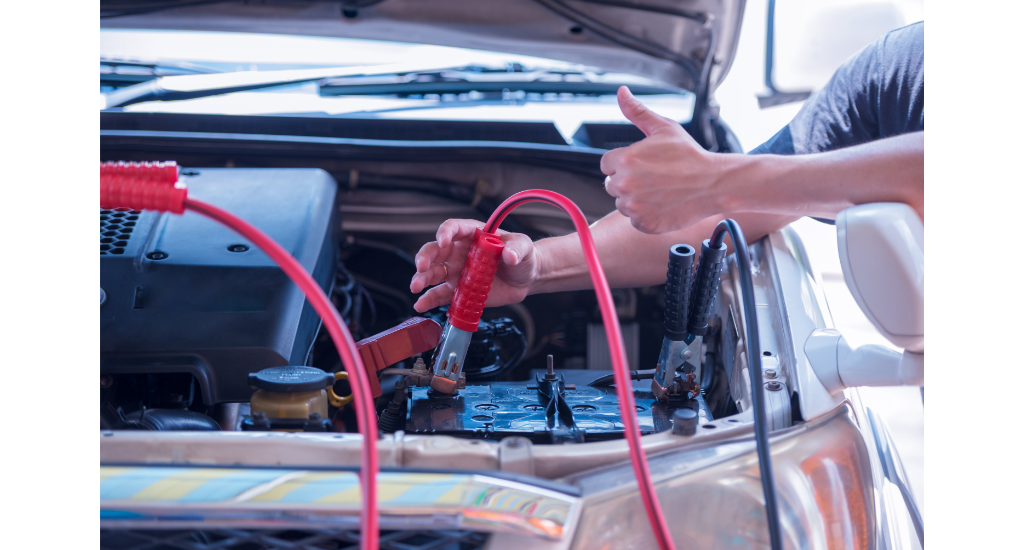What To Do If Your Car Battery Dies
Imagine you are driving alone on a serene countryside road, enjoying the beautiful scenery, when suddenly, your car sputters and comes to a halt. Panic sets in as you realize you might have a dead car battery, leaving you stranded far away from any help.
The frustration and inconvenience of a dead car battery are experiences familiar to many drivers. However, with the right knowledge and preparation, you can handle this situation like a pro and get back on the road swiftly.
Recognizing the Signs of a Dead Car Battery
Before delving into the solution, it’s essential to recognize the signs of a dead car battery. Dimming headlights, warning lights on the dashboard, an unusual cranking sound from the engine, and the inability to start the car are typical indicators of a battery issue. Knowing these signs can help you differentiate between a dead battery and other potential problems, aiding in a faster and accurate resolution.
Safety Precautions
Safety should always be your priority when dealing with a dead car battery. If possible, move your car to a safe location away from traffic. Turn off all electrical components and put on safety gear like gloves and goggles before attempting any troubleshooting. It’s also crucial to understand the potential risks of jump-starting a battery, such as sparks or short circuits.
How to Jump-Start a Car Battery
Jump-starting a car battery is a common method to get your vehicle running again. To begin, you’ll need a set of jumper cables and another working vehicle. The step-by-step guide includes positioning the cars properly, connecting the jumper cables correctly, starting the working vehicle, attempting to start the dead car, and safely disconnecting the cables. While jump-starting is relatively simple, it requires careful attention to avoid any hazards.
Using a Portable Car Battery Charger
Alternatively, a portable car battery charger can be a more convenient and safer option for some drivers. These devices are easy to use and don’t require another vehicle for assistance. The process involves connecting the charger to the dead battery, setting the appropriate charging parameters, allowing the battery to charge, and then safely disconnecting the charger. However, it’s essential to follow the manufacturer’s instructions and avoid overcharging to prevent damage to the battery.
Seeking Assistance from Professionals
If you’re unsure about jump-starting or using a portable charger, or if you encounter recurring battery issues, it’s best to seek assistance from professional roadside services. These experts have the knowledge and experience to handle dead car batteries efficiently and safely. Calling for professional help can save you time, effort, and potential risks associated with improper battery handling.
Preventive Measures for the Future
Once your car is up and running again, it’s crucial to take preventive measures to avoid future dead battery situations. Understanding the average lifespan of car batteries can help you anticipate when a replacement might be necessary. Regular maintenance, such as checking battery connections, cleaning terminals, and testing the battery’s charge, can extend its lifespan significantly. Additionally, using a battery tender or maintainer when your car is parked for extended periods can keep the battery charged and in good condition.
Dealing with Other Battery-Related Issues
While a dead battery is a common issue, there are other battery-related problems that drivers may encounter. Battery corrosion, caused by the build-up of sulfate, can hinder a battery’s performance. Regularly cleaning the terminals can prevent this issue.
Additionally, identifying and troubleshooting parasitic draws, which drain the battery when the car is off, can save you from future dead battery incidents. Extreme weather conditions can also impact battery performance, so drivers in areas with harsh climates should take extra precautions.
Revive Your Dead Car Battery For a Smooth Ride!
In conclusion, encountering a dead car battery can be frustrating, but armed with knowledge and preparedness, you can handle it like a pro. By recognizing the signs, taking safety precautions, and understanding the various methods of addressing the issue, such as jump-starting and using a portable charger, you can get back on the road quickly and safely.
Remember, regular maintenance and preventive measures are key to prolonging your battery’s life and avoiding future dead battery incidents. So, stay informed, stay prepared, and stay empowered to overcome the dead car battery dilemma. Happy and hassle-free driving!
